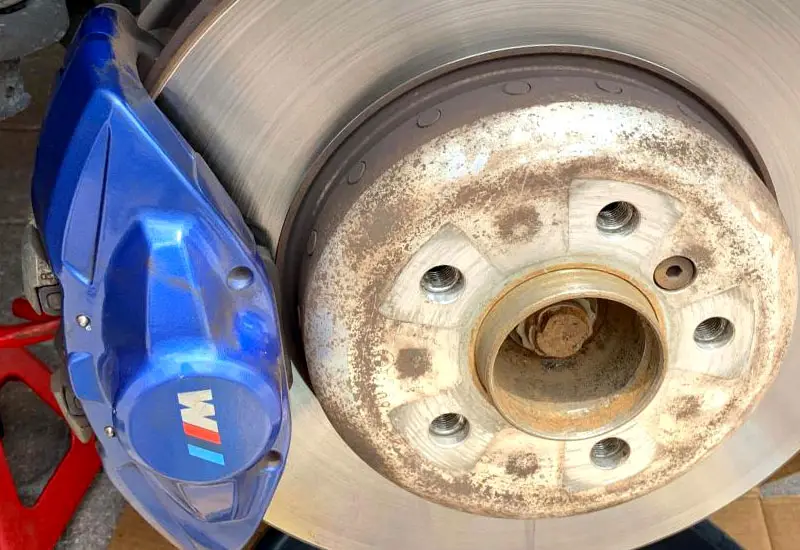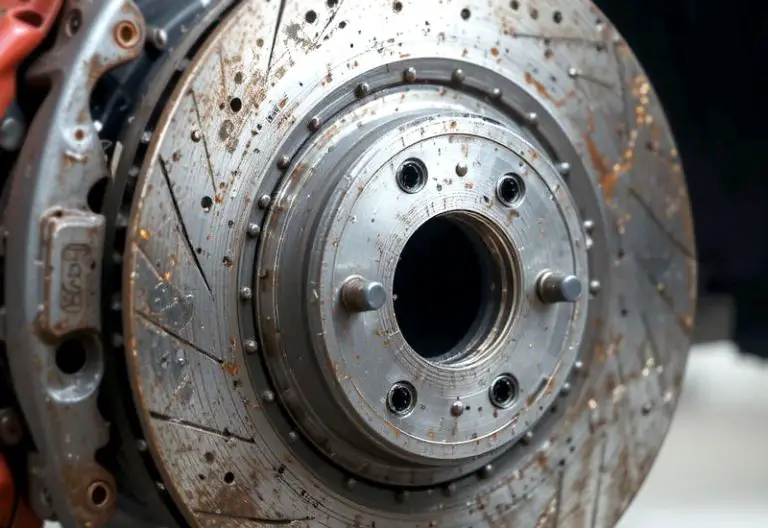Ever wondered why brake calipers are placed in different spots on cars? It’s a cool question, and the answer has a lot to do with safety, performance, and design. Brake calipers are key parts of your car’s braking system, helping stop your wheels from spinning when you hit the brakes. But did you know that they’re not all in the same place? Some cars have them at the front, some at the back, and others even in unusual spots. Let’s dive into why brake calipers are positioned differently and how it affects your ride. Ready to learn? Let’s go!

Understanding the Basics of Brake Calipers
Before diving into why brake calipers are positioned differently, it’s essential to understand what they are and how they function within the brake system. The brake caliper is a crucial component in disc brake systems, which are commonly found in modern cars. It’s essentially a metal clamp that houses the brake pads and presses them against the brake rotor to create the friction that slows down or stops the vehicle.
There are two main types of brake calipers: floating calipers and fixed calipers. A floating caliper moves in and out to adjust to the rotor, while a fixed caliper remains stationary and uses multiple pistons to apply pressure. Both types of calipers use hydraulic pressure to operate, which is provided by the brake fluid. When you press the brake pedal, it sends a signal through the brake lines, causing the pistons in the calipers to press the brake pads against the rotor, generating friction that slows the car.
The position of the brake caliper on the vehicle can have a significant impact on the effectiveness and overall braking system performance. It is influenced by the type of vehicle, the design of the suspension system, and the specific performance requirements of the braking system.
Factors Influencing Brake Caliper Positioning
Brake caliper positioning isn’t a matter of random placement; it’s based on multiple factors designed to optimize the performance and safety of the braking system. Various considerations like vehicle weight distribution, driving conditions, and braking requirements are taken into account by automotive engineers when deciding where to place the calipers.
1. Vehicle Weight Distribution
A car’s weight distribution plays a major role in how the braking system is designed and where the brake calipers are positioned. Generally, cars are either front-heavy (meaning most of the weight is at the front) or rear-heavy. The positioning of brake calipers takes this into account to ensure that braking power is applied efficiently across the vehicle.
For instance, in front-wheel drive vehicles, the majority of the braking force is concentrated on the front wheels. This is because the front of the car handles the majority of the vehicle’s weight, especially during braking when inertia pushes the car forward. As a result, you will typically see larger, more powerful brake calipers positioned at the front of these vehicles. The rear calipers, while still important, may be smaller and less powerful as the weight distribution of the vehicle during braking becomes more balanced.
In rear-wheel drive cars, the braking force may be more evenly distributed between the front and rear wheels. Depending on the car’s weight distribution, the rear brake calipers may be positioned in a way that enhances stability and braking balance.
2. Vehicle Performance Requirements
The type of vehicle and its intended use have a significant impact on brake caliper positioning. Performance cars, such as sports cars or luxury sedans, are designed for higher speeds and more aggressive braking. These vehicles require precise and powerful braking systems that can handle the heat and stress generated during high-performance driving. In these cases, engineers often place the brake calipers in positions that allow for optimal cooling and braking efficiency.
For instance, high-performance sports cars often have brake calipers positioned close to the center of the vehicle’s wheels to reduce the distance between the brake pads and the rotors. This can help to achieve more efficient braking and reduce the potential for heat buildup, which can affect brake performance. Moreover, the size and material of the brake calipers are often optimized for performance, with ventilated rotors and advanced materials used to ensure the system can handle the demands of high-speed driving.
On the other hand, economy cars or family vehicles are designed with less emphasis on high-performance braking. While still ensuring safety and reliability, these vehicles may have less aggressive brake caliper positioning. Engineers may prioritize cost-efficiency, comfort, and longevity, rather than pushing the limits of braking performance.
3. Suspension System Design
The design of the suspension system is another critical factor in determining the position of brake calipers. Suspension systems are responsible for maintaining contact between the tires and the road, and their configuration impacts how forces are transferred during braking.
In some vehicles, particularly those with independent suspension systems, the brake calipers may be positioned in a way that maximizes braking efficiency without compromising the suspension’s ability to absorb shocks. For example, in vehicles with multi-link suspension, the brake caliper may be placed in a position that allows for smooth interaction between the suspension and braking systems.
In vehicles with solid axle or beam axle suspensions, brake calipers are often placed differently. This type of suspension is typically found in trucks or larger vehicles that require additional stopping power. The brake calipers in these vehicles may be placed further outboard, which can help with stability when the vehicle is loaded with cargo or towing a trailer.
4. Heat Dissipation
Braking generates a significant amount of heat, and excessive heat can reduce the effectiveness of the brake system. This phenomenon, known as brake fade, occurs when the friction between the brake pads and rotors causes the components to become too hot, reducing their ability to create friction and, consequently, their braking power.
To prevent brake fade, brake calipers are often strategically positioned to optimize cooling. This may involve using ventilated or slotted rotors to improve airflow or placing the calipers in positions that allow for the most efficient heat dissipation. In performance vehicles, specialized cooling ducts may be included to direct air toward the brake system, ensuring the calipers remain cool even under heavy braking conditions.
In some vehicles, such as sports cars, the brake calipers may be positioned on the outboard side of the wheel, where they are exposed to more airflow. This positioning can help to lower temperatures and improve braking performance during intense driving.
5. Space Constraints and Design Limitations
Finally, practical considerations like space constraints and overall vehicle design must be taken into account when positioning brake calipers. The car’s overall design, wheel size, and available space for the brake components play a critical role in the placement of the calipers. In some cases, space limitations may force engineers to use more compact caliper designs or adjust the positioning of the calipers to fit within the available space.
For instance, in vehicles with smaller wheels or a compact design, the calipers may be positioned more inward to ensure they fit within the confines of the wheel and tire assembly. In contrast, larger vehicles with more room in the wheel well may have larger or differently positioned brake calipers to accommodate the size and performance needs of the braking system.
The Impact of Brake Caliper Positioning on Braking Performance
The position of the brake caliper not only influences the vehicle’s braking performance but also plays a significant role in the comfort and safety of the driver and passengers. Let’s take a closer look at how the positioning of brake calipers affects the car’s overall performance.
1. Braking Power
Braking power is a key factor in how quickly and effectively a vehicle can stop. The closer the brake calipers are to the wheel, the more direct the force applied to the brake rotor. This results in faster and more efficient braking. Conversely, when the brake calipers are placed further away from the wheel or rotor, the braking force is less efficient and may lead to a longer stopping distance.
In performance vehicles, achieving maximum braking power is essential. The strategic placement of the brake calipers ensures that the vehicle can decelerate quickly, even under high speeds or extreme conditions.
2. Handling and Stability
The positioning of brake calipers can also impact a vehicle’s handling and stability. When the calipers are positioned asymmetrically or unevenly, it can cause uneven braking force distribution, which could affect the car’s stability. This can lead to issues like “pulling” to one side while braking, especially if one side of the brake system is more powerful than the other.
By ensuring that the calipers are positioned correctly and balanced across the axle, engineers can improve handling and stability. This is particularly important in vehicles like sports cars or trucks, where handling during braking is critical for safety.
3. Ride Comfort
In some vehicles, the positioning of the brake calipers is designed to improve ride comfort. For example, the calipers might be placed in a way that minimizes the noise and vibrations transmitted into the cabin during braking. This can help create a smoother and quieter ride, particularly in vehicles designed for luxury or comfort.
Additionally, the brake calipers’ position relative to the suspension system helps to absorb the shocks generated during braking, leading to a more comfortable driving experience.
Are These Questions in Your Mind?
Is it true that larger vehicles have different brake caliper placements?
Yes, larger vehicles, like trucks and SUVs, tend to have differently positioned brake calipers to accommodate their larger size and increased braking power needs. They often have outboard calipers and larger brake systems to handle the additional weight and ensure safe braking.
Can brake caliper placement affect my car’s fuel efficiency?
While brake caliper placement does not directly affect fuel efficiency, it can impact braking performance. Better brake efficiency can reduce the wear on your braking system, which could, in turn, reduce the need for frequent maintenance, potentially improving fuel efficiency.
Do I need to worry about brake caliper positioning during routine maintenance?
In most cases, you don’t need to worry about brake caliper positioning during routine maintenance, as it’s designed to function optimally. However, during repairs or replacements, it’s essential to ensure that the calipers are properly aligned to maintain braking performance.
Can brake calipers be positioned differently on the same model of car?
Yes, different models of the same car might have variations in brake caliper positioning, especially if there are differences in trim levels, suspension types, or performance packages.
Is it common for performance cars to have larger brake calipers?
Yes, performance cars often feature larger brake calipers, as they are designed to provide greater stopping power, especially at higher speeds or during high-performance driving.
Can brake caliper positioning impact my driving comfort?
Yes, improper caliper positioning can lead to uneven braking, which could affect comfort by causing vibrations or steering pulls during braking. Proper caliper alignment is crucial for a smooth, stable ride.
Do I need to replace brake calipers if they become misaligned?
If brake calipers become misaligned or damaged, they may need to be replaced or realigned to ensure proper braking performance. Misalignment can lead to uneven braking and safety issues.
Can brake caliper design affect the lifespan of my brake system?
Yes, the design and positioning of brake calipers can influence the lifespan of your brake system. Well-designed calipers can help distribute braking forces more efficiently, leading to less wear and tear on the system.
Is it possible to upgrade my brake calipers for better performance?
Yes, many high-performance brake calipers are available as aftermarket upgrades. These calipers often feature advanced materials and improved designs for superior braking performance.
Do I need to check brake caliper alignment regularly?
While brake caliper alignment is generally maintained during routine maintenance, it’s essential to monitor your brake performance for signs of issues like uneven braking or unusual noises, which could indicate problems with the calipers.
I hope this article has helped you understand why brake calipers are positioned differently across various vehicles. The strategic placement of these crucial components affects everything from braking performance to overall ride comfort and vehicle stability. By considering factors such as weight distribution, performance requirements, suspension design, and cooling efficiency, engineers can design braking systems that meet the specific needs of different vehicle types.


